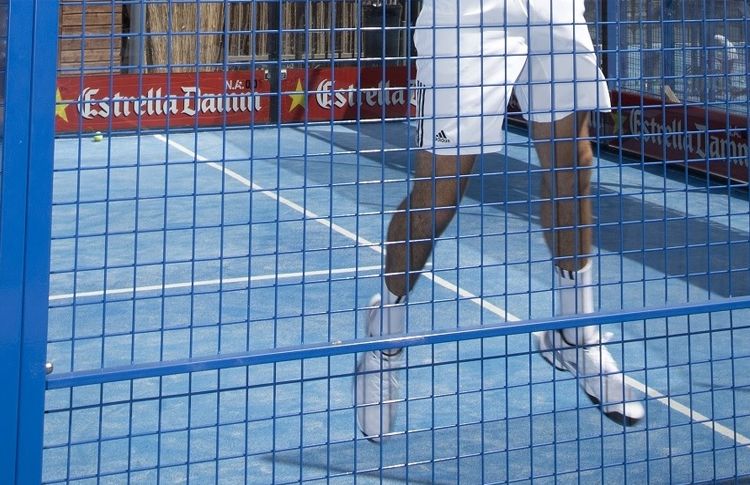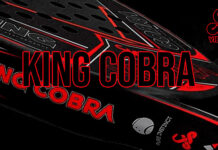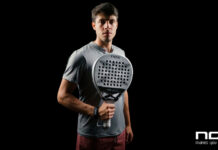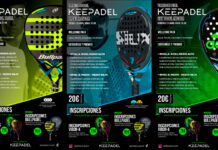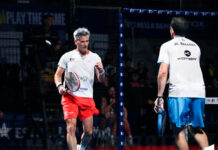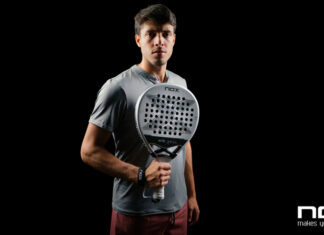Do not miss this new installment of the Blog of the companions of Adidas Paddle. On this occasion, and focused on performance within the track, from the firm we present a series of tips for us to learn to get the 'maximum performance' to one of those elements with which you have to learn to 'live' every time that you enter a court.
Pade World Press .- Who has not choked a game because of the fence. In defense you can't get any balls out and, in attack, all the balls you throw are very easy for the opponent to counter. On this occasion, we will try to facilitate the game when the gate enters the scene.
First of all, and given that the vast majority of current courts have an electro-welded (hard) grid and square shape, we will focus on their study and analysis when playing. The fence hinders our own game in defense and helps us in attack because of how unpredictable the ball becomes once it has hit with it. If we learn to perceive what the ball does when it hits it, it will be easier to use it in the proper way, thus managing to avoid difficulties whenever we defend and, what is more important, to make it an ally of our attack blows at the time. to beat our rivals.
How to play with the fence? That is the question… There are several aspects that we must work on in the perception of what we will call 'ball-fence', depending on whether we defend or attack. The trajectory after the bounce (ascending or descending), the force with which the ball reaches the gate, as well as the effect that the ball brings, will be differentiators of the final ball that we will face or make our opponents face. When we talk about the trajectory of the boat before hitting the fence, we are referring to whether the ball is rising or falling before reaching it. Although it is difficult to affirm that what we propose is always fulfilled, it is true that it is helpful to think that a ball that reaches the fence in descent may be easier to control than another that arrives in an upward trajectory.
When we talk about the force with which the ball reaches the fence, we clearly differentiate a ball that will come out slowly or will be very close to the fence and, on the contrary, when a ball hits after an attack hit with great force it will come out more alive.
How to play with the force factor in the grid:
- If I am defending, and the ball arrives slowly at the gate, I must approach with the advanced blade and the weight close to the ball. We will have to move quickly towards the gate anticipating its possible exit.
- If I am attacking, I must take force into account so that it benefits me and does not cause me problems. If the opponent is far away I can play it slowly and with little rebound and then close gaps by getting close to the net. We will generate great pressure and uncertainty for the rival.
When we talk about the effect that we apply to the ball, we distinguish effects that can cause changes in the trajectory of the ball after its impact with the fence, being able to touch and fall, touch and separate towards the center of the court, touch and stay close to the fence or touch and climb after impact.
How to use the effects:
- In defense, things get very complicated when we face players who print great loads of effect on their shots. When I play against very cut balls, with little bounce prior to impact with the fence, it is likely that it will plummet after touching it ... Therefore, we must lower the center of gravity, find a good support close to the ball and prepare the blade in front and below.
If, on the other hand, I play against a ball that comes very high, I must be alert for the possibility that it touches the grid and comes up. Here we can not get very down or too behind the ball. Let's leave some margin easily recoverable and pay close attention to the ball. As for the side effects, we will tackle them in attack as a great tool to overcome the rivals.
- In attack it is important to know how to use the effects to play with the gate and squeeze our rivals as much as possible. If we distinguish volley shots, trays and shots we can advise:
a) Volleys: volleys with speed and cutting load will be of great difficulty for the opponent and will facilitate us to gain initiative in the game. Net hits with opponents who are glued to the grid to which we hit flat and / or topspin can make the ball run over them but in the case of topspin, be careful if it is on their right ... It can turn against us.
b) Tray: in relation to this coup there is a 'Golden rule'. If you are right-handed and occupy the drive position you can play trays on the fence of the player on the right. The natural lateral effect of the right-hander will complicate the return. But when we play on the backhand player we must take into account that the grate will spit the ball and it will not be very harmful. On this player it is better to play the ball on the side wall.
c) Auction: the strong flat shot with little rebound is a good tool if I play it cross. The ball will be crushed against the fence and will fall. The topspin completes the 'Gold rule' inverse to the tray. Care on the right and test on the reverse. There are great players who, over the opponent on the right, play powerful tops and manage to get the ball to climb through the gate, getting them out of the court.
So far our tips to get the best out of the game with the gate. As we always tell you, it is a matter of little by little to try in each game until we reach the point of not being afraid to play with the fence and turn it into our best ally in the end.
Born to Win!
José Garea
* You can follow all the news of the world of paddle in our profiles of Facebook y Twitter as well as subscribe to our Newsletter .

